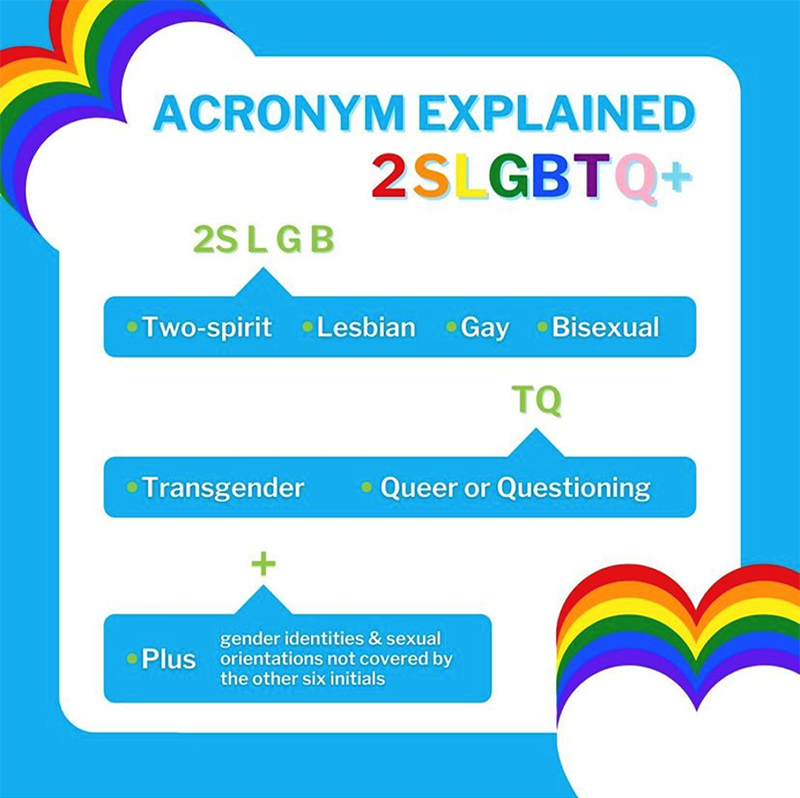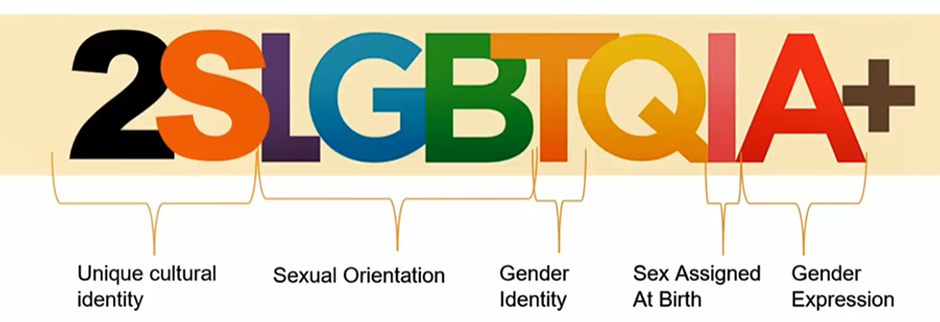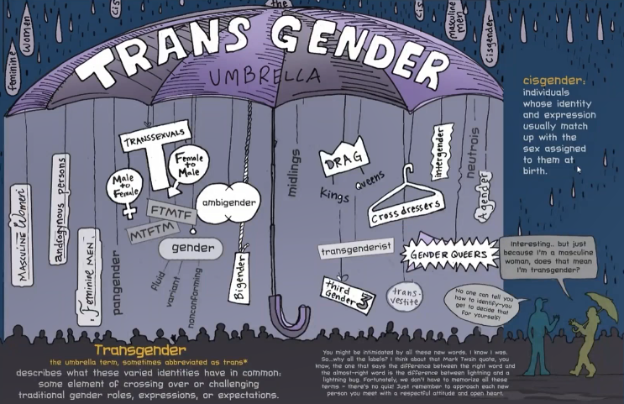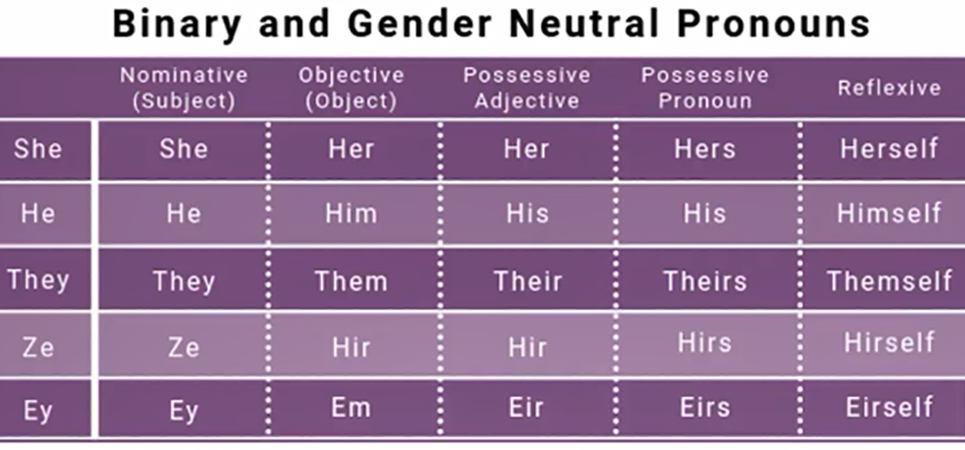02 August at 07:00AM
LGBTQIA+ Community: Understand, Learn, and Be an Ally

On June 28, 2022, Sandeep Nair (he/him/they/them), Manager of Business Development at Pride at Work Canada, spoke to PMI Toronto members about some current and major LGBT+ matters. Sandeep presented the issues and topics to fit all audiences. Those in attendance were honoured to learn from Sandeep’s experience and his in-depth coverage of the topics.
Introducing Our Speaker
Sandeep Nair is a temporarily abled, non-binary, queer, person of colour with a vibrant cultural and ethnic background. He understands the role organizations can play in impacting positive social change for their businesses. In 2019 Sandeep moved to Canada and brings with him more than 13 years of experience as an Equity, Diversity, and Inclusion (EDI) Consultant across Asia.
Sandeep has led training, consulting services, and key publications on 2SLGBTQIA+ Inclusion—both in research and implementation—aiming to create a safe and inclusive society. He has also contributed his expertise in EDI at the global summit by Out & Equal for two consecutive years and has led the This is Me campaign which shines a light on the stories and lived experiences of disability and mental health, an initiative by the Lord Mayor's Appeal in London. Sandeep also volunteers with youth and teens as a mentor with Vancouver Island BigBrothersBigSisters Foundation.
Understanding the Acronym 2SLGBTQIA+
Sandeep began with explaining the importance of including “2S” in the 2SLGBTQIA+ acronym—either at the beginning or at the end in US and Canada. It represents the unique cultural identity relevant to the Indigenous community of this land, also known as Turtle Island. This denomination is exclusive to queer members of the Indigenous community in the USA and Canada.
If used in full, the acronym is 2SLGBTQQIAAP. The plus sign (+) stands for Questioning, Allies, and Pansexual members of the community.

|
Did You Know? The L (Lesbian) always comes before G (Gay) to acknowledge the caring and compassion lesbians have provided to many gay members of the queer community during the HIV/AIDS pandemic. They cared for them during their last days even when society didn’t have a lot of information on how the disease spread and affected others. |

The acronym also indicates different dimensions of humanity for each person. It refers to sexual orientation, gender identity, sex assigned at birth, gender expression, and cultural identity. These layers intersect and influence each person’s personality, how they see themselves, and how they present to society at large. Sandeep explains a few of the Sexual Orientation Gender Identity Expression (SOGIE):
> Sex Assigned at Birth: A label attached to human beings when they are born and based generally upon genitalia or other physical characteristics.
> Gender Identity: A person’s internal and individual experience of gender. Being a man, woman, both, or not subscribing to the idea that gender is limited to such terms. One’s gender identity can be the same or different from their sex assigned at birth.
> Gender Expression: This is how one engages with conventions and stereotypes associated with a specific gender to present their gender externally daily based on social conventions, which varies according to the time and place a social group lives in.
> Sexual orientation: A personal characteristic that encompasses emotional, romantic, or sexual feelings toward another person. It’s important to note that sexual orientation means the attraction felt for another and not sexual behaviour or someone’s sexual history.
Please note that “Sexual Preference” is no longer an accepted term because it implies a conscious choice. By using the term, sexual orientation, it reinforces who the person is and their personality trait.
As human beings, we all have layers, and we should be given the chance to define how we identify. That’s why Sandeep encourages us to keep an open dialogue. Anyone can choose one or several of the denominations presented above and define themselves how it fits best for them. Why don’t you give it a try and identify yours?
Transgender Lives Matter
If you’re still unclear about how to define transgender Sandeep presented the image below as a way to better understand the different individuals in the transgender community.

Sandeep went on to explain that transgender, sometimes abbreviated as trans, is an umbrella term usually connected to gender identities and expressions that don’t match the sex assigned at birth. A few examples are gender fluid, gender queer, and cross dressers. This term is the counterbalance of cisgender people, in which the gender identity matches the sex assigned at birth. The biggest takeaway for you is the importance of referring to someone by the gender identity they have specified instead of placing them under any umbrella term. This shows, in a meaningful way, that they are respected and appreciated by who they are.
Learn Why Pronouns are Important
Pronouns are how we refer to others, or ourselves, in the third person. In the past, pronouns were assigned to us by others, but now immense energy is being invested in changing this trend. We must stop automatically assigning pronouns to people based on the way they look.
Today, each person selects their own pronouns, which may or may not align to established conventions. It is imperative that people are addressed by the pronoun they have chosen, not the one automatically assigned to them by others. This acknowledges and respects their individuality. We’ve also learned how important it is to use gender-neutral pronouns—they/them. Below is an outline of pronouns used today.

Gender neutral pronouns have always existed in the language and their use has evolved. The emerging trend of using gender neutral pronouns has led to new ones to be created such as Ze and Ey. These pronouns are often used by those who don’t identify with the single-person-they pronoun.
In some languages, pronouns and words are highly gendered, which means every word has a gender assigned to it. This poses an additional roadblock towards adopting gender-neutral pronouns. Other languages, on the other hand, don’t have gendered pronouns which makes the adoption of gender-neutral pronouns easier. As this is highly driven by culture, two countries that speak the same language may not adopt the same gender-neutral pronoun. Currently, many activists are putting great effort in the creation of gender-neutral pronouns.
So why is it so important, especially for transgender and gender non-conforming people that pronouns are shared and correctly used? Simple. It makes them feel validated, safe, and at ease. This minor act frees up mental energy for that person to focus and contribute more fully to the space they’re in. In the workspace, this means an increase in productivity, team morale, and cohesiveness. There are some situations, though, where someone may not feel comfortable sharing the pronouns they use, or they may use no pronouns at all. In those cases, revert to gender-neutral pronouns and their names respectively when referring to them. Explaining why you’d like to know the pronouns someone uses, however, will likely make them more comfortable sharing this information.
What about the use of titles or announcements, which can be areas of concern for gender-nonconforming people? Titles are commonly used in correspondence (e.g., letters, emails) to address a person or their profession. Announcements, such as ladies and gentlemen, boys and girls, are commonly associated with gender. A gender-neutral title can function the same way without specifying or implying gender. For example, firefighter, flight attendant, chair, police officer, newly-wed. So, when writing you next email, consider using the person’s first and last name. If a title is needed try using, Mx., which has been created as a gender-neutral title.
Sandeep also suggests we all start including pronouns when mentioning other people in conversations (written and spoken). For instance, when introducing a colleague, one may say “This is Jane, she/her, the Director of the department”. This will popularize and weave the habit into the conversation and everyone’s social consciousness. Using the correct pronouns is also a sign of respect.
Intersectionality of People
Sandeep spoke about the importance of acknowledging the intersectionality of the people we interact with and that no one should be diminished to a single facet of their personality. An LGBT+ person can also have other elements making up their personality and it’s probable that there will be similarities. It’s possible to honour queer people throughout the year, such as remembering lesbian and transgender women on international women’s day, 2-Spirit people on National Indigenous People’s Day, highlighting the contributions of queer Black people during Black history month, reflecting on the life and history of a queer person with disability and so forth.
Diversity in the Workplace and Why It Matters
What does this mean for organizations overall? Being an inclusive environment and fostering diversity has positive economic outcomes. According to the study by the Power of “Out” 2.0: LGBT, in the workplace, employers who foster EDI become employers of choice for both queer and non-queer employees (Center for Talent Innovation, 2013):
> 72% of non-LGBT individuals prefer to work for inclusive companies
> LGBT inclusive companies build higher levels of trust and engagement
> 71% of LGBTQ+ respondents are more likely to purchase from a company that supports the queer community
> 24% of LGBTQ+ workers attribute their decision to come out professionally to a strong network of allies
Be an Ally
For those who don’t identify as 2SLGBTQIA+ you are invited to be allies. An ally is defined as, “a member of a privileged group who advocates against oppression.” It means you understand what your privilege gives you access to and what is taken from those who are not like you. For example, cisgender people have smooth and seamless access to washrooms, healthcare, etc. Then, empathizing with the people who don’t share the same privilege and must fight to obtain what privileged people take for granted. Being an ally is important because it lets everyone know they are supporting and attentive to the needs of others and want to help change the world for marginalized communities. Be an ally today. In fact, write a personal action plan that lists 1-3 things you would do differently to be seen as an ally.
Here are six tips on how to be a good visible ally:
1. Use inclusive language
> Say the words 2-spirit, gay, lesbian, etc. when addressing a group of people.
> Start using the inclusive language you’ve just learned!
> Mirror the terms used by your audience.
2. Avoid heterosexism and making assumptions
> Don’t assume everyone is cisgender and heterosexual.
3. Treat everyone equally
> Treat queer people as you’d treat anyone else.
> Respect boundaries.
> Ask yourself “would I ask this question to a cisgender straight person?”
> Respect pronouns, chosen names, and self-identities.
4. Address inappropriate gay related comments
> Be direct and prompt when faced with inappropriate comments.
> When in doubt, replace the LGBT term with a race or gender-related term.
> If you get a visceral reaction, that’s a good indicator you’ve just been faced with homophobia.
5. Be a role model
> Create a personal level of comfort to hold conversations about 2SLGBTQIA+ topics.
> Support events created by the 2SLGBTQIA+ network in your workplace.
> It’s OK to make mistakes. As project managers, we must learn from them and improve.
6. Be an ally
> It could be a visual queue, a word on your desk, pronouns on your signature.
> Even small gestures send signals across the network that contribute to positive change.
> Ask questions to better understand what you don’t know.
Get Involved
If you’d like to learn more or how to get involved, please visit prideatwork.ca or reach out to PMI Toronto’s DEI Committee. Support the PMI Toronto Steering Committee on Diversity and Inclusion. For inquiries, please contact info@pmitoronto.ca.
Follow our News




